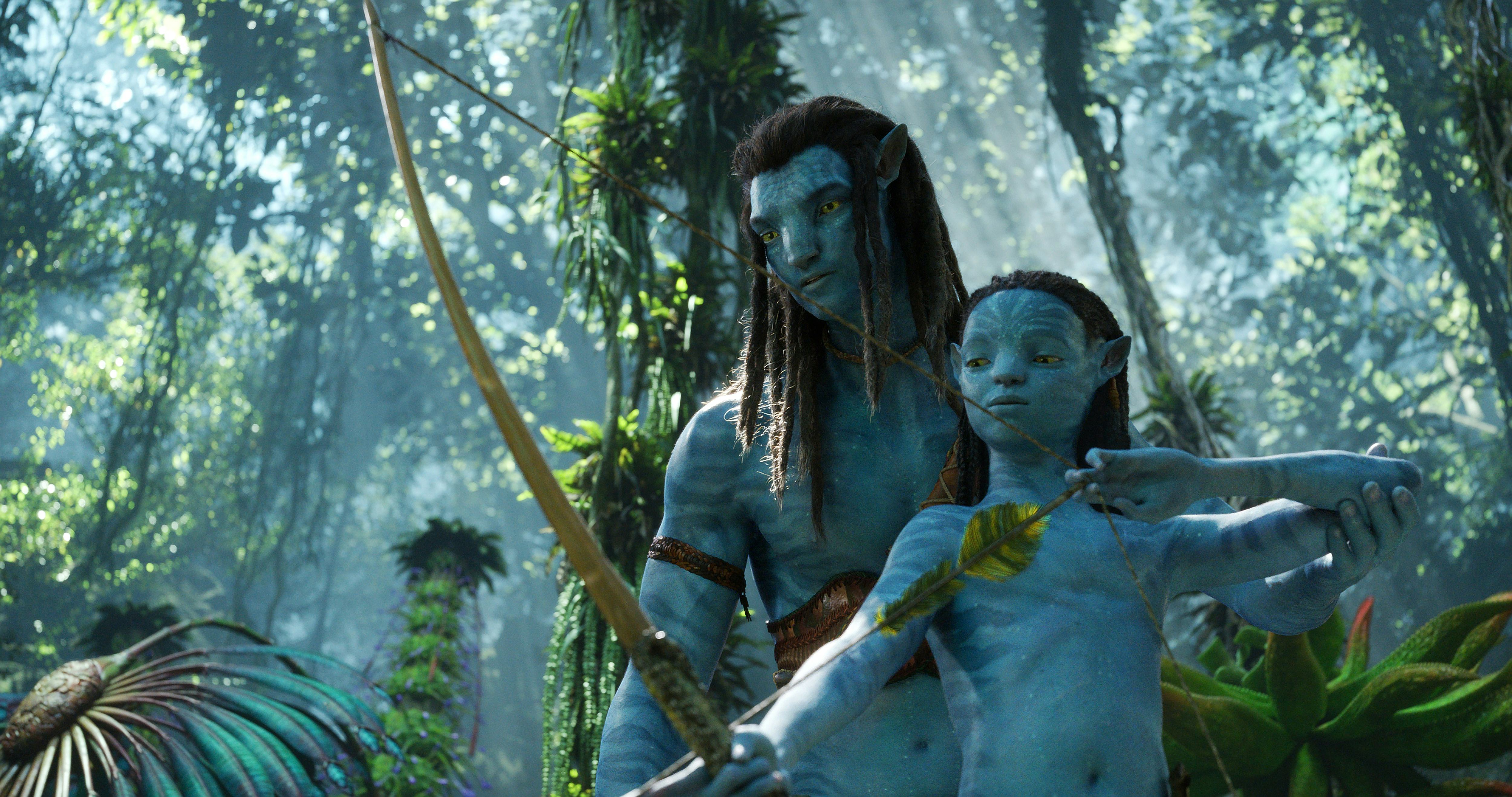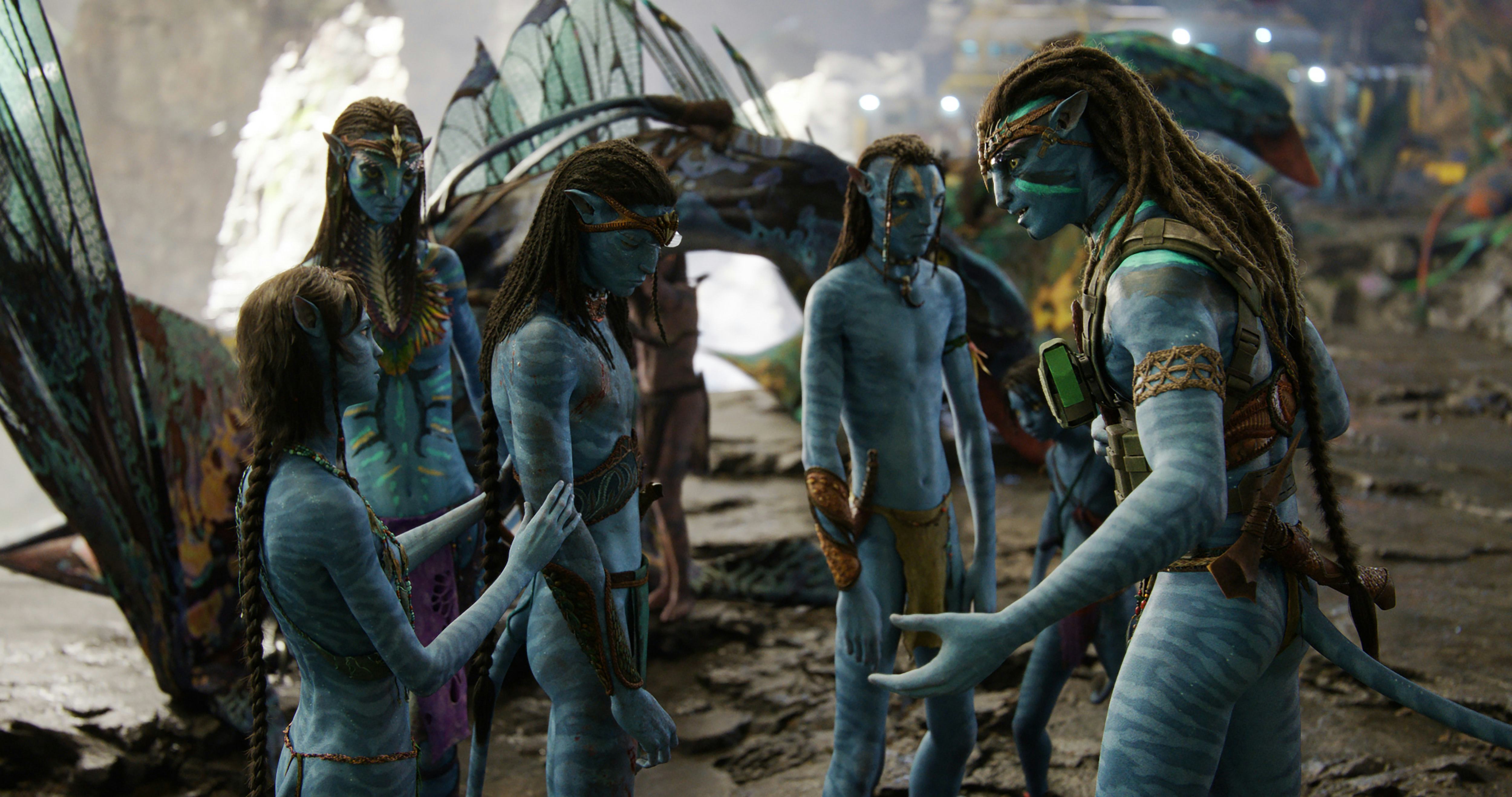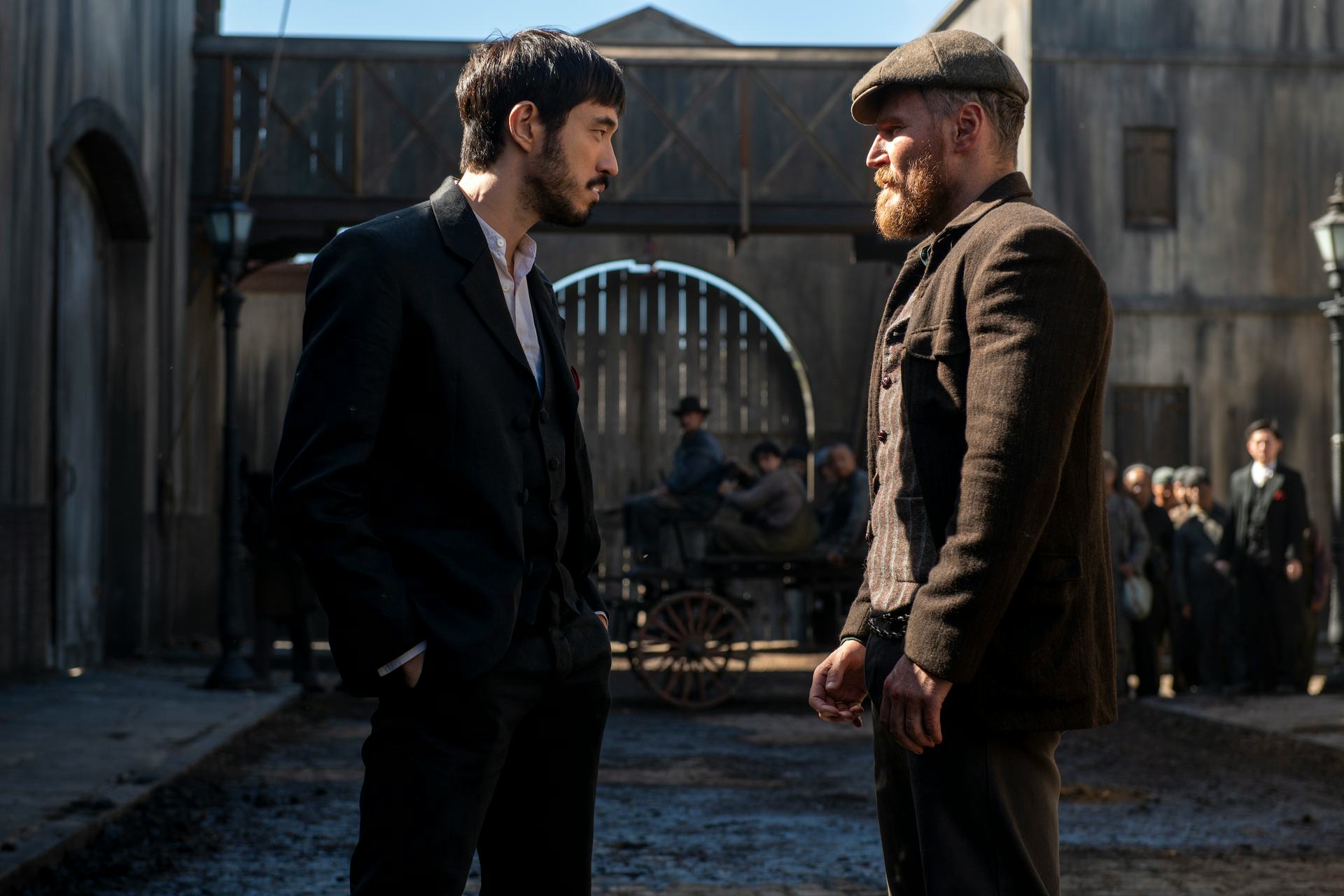
Whatever your feelings are with subtitles in movies, one thing’s for sure: Three hours of hearing space alien dialogue can feel like much.
Thankfully, Avatar: The Way of Water uses a clever trick to mask the alien Na’vi into plain, conversational English that’s easier to digest for the most casual of moviegoers. (Precisely the people you want to help your movie gross $2 billion .) This trick isn’t new either, having been deployed in movies like The Hunt for Red October and the Cinemax/HBO Max series Warrior.
In Avatar: The Way of Water, Jake Sully (Sam Worthington) brings audiences up to speed in the opening prologue by introducing the family he’s raising with Neytiri (Zoe Saldaña). Initially, audiences hear Jake and his family speak Na’vi, a fictional language invented for the films by Paul Frommer, a communications professor at the University of Southern California.
But not long into the prologue, Jake mentions that he’s now so used to hearing and speaking Na’vi, “It might as well be English.” That’s when the (often-mocked) yellow Papyrus subtitles vanish, and the spoken Na’vi by Jake’s family becomes conversational English. Almost the entirety of The Way of Water is spoken in “English” as Jake allows his point of view to serve the audience. Only in specific scenes, like those with Quartich (Stephen Lang) and other humans is the English dialogue diegetic — as in, actually spoken by the characters.

This “trick” has been used elsewhere, and for other languages. In the 1990 thriller The Hunt for Red October which centers on a rogue Soviet military submarine, director John McTiernan found a clever way of balancing the movie’s complex story and an array of characters. McTiernan decided, during a pivotal scene, to zoom the camera in on actor Peter Firth, playing a Soviet officer, who speaks in his native language before switching to English after uttering the word, “Armageddon.”
Decades later, the Cinemax (now HBO Max) series Warrior made even more clever use of “translating” Chinese into English — as well as what kind of English is spoken, and by who.
Set in the Tong Wars of San Francisco in the 1870s, the series flip-flops between newly-arrived Chinese immigrants and English-speaking Americans, and the dangerous ways these disparate communities collide. Like Red October, Warrior uses the camera and swings around a character, played by Hoon Lee, in mid-dialogue to translate their Cantonese into contemporary, modern English. You can see it for yourself here at the 7:11 mark in an official upload of the first episode on YouTube.

In an interview with Inverse during Warrior’s 2019 premiere, showrunner Jonathan Tropper said this approach was “to make the Chinese characters the most accessible on the show.”
“We’re giving the English viewer a ‘universal translator,’” said Tropper. “That camera movement is what I call The Hunt for Red October transition... It establishes they’re not speaking English, and we let them speak English.”
James Cameron achieves a similar goal, with modern English spoken by Jake’s Na’vi family even when they’re not speaking English at all. With The Way of Water, Cameron distills the technique to a simple line of dialogue: Na’vi simply sounds like English to Jake’s ears.
While it would have been impressive for Cameron to train his ensemble of actors to learn Na’vi — in addition to their comprehensive free-dive training and Olympic levels of breath-holding — filmmaking is all about finding efficient solutions to strange problems. While Cameron could have moved his camera in some fun way (we know he can), Jake simply telling us works just as well as showing us. Sometimes, telling is just as good as showing.
Avatar: The Way of Water is now playing in theaters.







